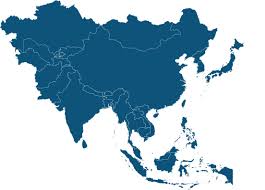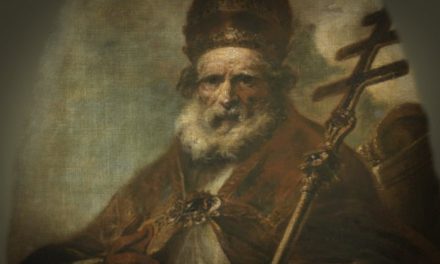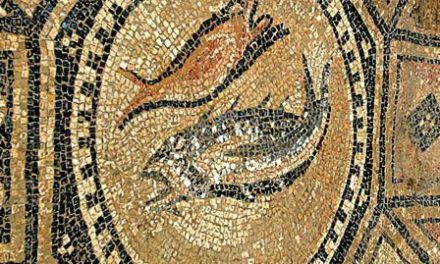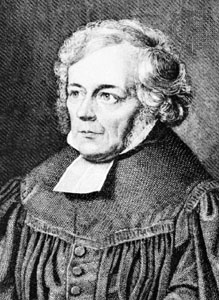This episode of CS is titled, Back in the East – Part 1
In our last foray into the Church in the East, we stopped our review with the Mongols. You may remember while the Mongols started out generally favorable to Christianity, when later Mongol Khans became Muslims, they embarked on a campaign to eradicate the Gospel from their lands. That rang the death knell to The Church in the East, which for centuries boasted far more members and covered a wider area than the Western Church.
And again, let me be clear to define our terms, when I speak of the Church in the East, I’m not referring to the Eastern Orthodox Church HQ’d in Constantinople; not the Greek Orthodox Church or it’s close cousin, the Russian Orthodox Church. The Church in the East was also known as the Nestorian Church and looked to the one-time Bishop of Constantinople, Nestorius who was officially labeled a heretic, but who became the patriarch of a wide-ranging church movement that reached all the way to Japan.
While today, Nestorianism is officially labelled a heresy in its view of the nature of Christ, it’s doubtful Nestorius taught that. Nor did The Church in the East believe it. The Nestorianism that bears the label “Heresy” is more a thing found in books than in the hearts and minds of the people who made up The Church in the East.
In any case, the once vibrant Church in the East came to a virtual end with the Mongols. It wasn’t till the 16th C that the Faith began a renewed mission to the East, and this time it was by a concerted effort of Europeans. It came because of the expansion of the Portuguese and Spanish empires in the 16th and 17th Cs, then to Dutch, English, French and Danish traders in the 18th and 19th.
Even before the Jesuit order was recognized by Rome, Ignatius Loyola was aware of the need for an able overseer of missions to the East. Though loath to lose his assistant, in 1540 Loyola sent his ablest lieutenant and close friend, Francis Xavier to the Portuguese colony of Goa in India. Xavier remains one of the greatest of all Christian missionaries. He possessed an immensely attractive personality and a Paul-like determination to preach the Gospel where Christ had not been named.
Xavier moved from Goa to the fishermen of the Coromandel coast of India, where he baptized thousands and engaged in discipleship, though by his own admission his command of the language was marginal. He visited Sri Lanka from 1541–45, and Indonesia for 2 years before entering Japan in 1549. He established a Jesuit mission there and had a couple Christian books translated into the language. Exposure to Japan, with its, at that time, deep respect for all things Chinese, convinced him to do whatever it took to enter China. He was poised to do so when he died in 1552.
Allesandro Valignano was born to Italian nobility and obtained a Doctor of Law degree at the University of Padua. But a profound religious experience we’d have to call a dramatic and genuine conversion, hijacked his previous career path and set him on mission. He became a Jesuit in 1566 because they were about the only ones doing missions at the time. He was appointed Visitor to Eastern Missions in 1573 and sailed to Goa from Lisbon in 1574.
After a period of study in Macau, he came to the conclusion the Church was going about the task of spreading the faith to new people all wrong. He was determined to take the Gospel into China, but realized that meant he’d need to learn the language and customs. The Chinese were an ancient and proud race. They weren’t going to be wowed by relatively uneducated and backward Europeans, regardless of how superior they might think they were. Valignano knew learning Chinese would open a door for the Gospel.
He vehemently opposed the conquistador approach to China and Japan both Portugal and Spain used in their conquest of the Philippines. He made 3 trips to Japan from 1578 to 1603. Like Francis Xavier, Valignano was convinced of China’s importance as a mission field but failed to make it there.
That would be left for 2 other Jesuits who carefully followed his missions philosophy – Michele Ruggieri and Matteo Ricci [Richie].
Ricci and Ruggieri entered China in 1583. They and their successors earned the deep respect of the Chinese, not least for their mathematical and astronomical abilities but because of their high regard for Chinese culture.
Ruggieri, a lawyer from Italy, worked with Ricci in Portuguese Macau before moving to the mainland. Together, they produced a Portuguese—Chinese dictionary, and Ruggieri later composed the first Chinese-Catholic catechism. He was proficient enough in the language to compose Chinese poetry.
Ricci, an outstanding intellectual, mastered the Confucian classics and came to believe that the kind of grounding he’d received in the works of Thomas Aquinas and his use of Aristotle was compatible with the moral ideals set out by Confucius. Ricci’s work of 1603, titled The Meaning of the Lord of Heaven, adopted this approach in reaching the Chinese literati, among whom he was deeply admired. Ricci believed participation by Chinese Christians in ancestor rites did not compromise their faith.
And yes: We’d probably disagree with him on that one.
From 1600, Ricci was allowed to live in Beijing. His successors, like Ferdinand Verbiest and Schall von Bell, were also greatly admired by the Chinese and were given official positions by the first Q’ing emperor in the late 17th C. They carried such influence, they were able to secure positions of honor for other missionaries.
It’s a tragedy that after the influence of Valignano’s policy was followed through with such success by Ruggieri, Ricci and their fellow Jesuits, it was eventually overturned in Rome. The so-called Rites Controversy at the opening of the 18th C, hinged on how far the honoring of ancestors was a civil versus a religious act. Rome ruled against Valignano’s position, saying Chinese Christians were engaging in superstitious and unbiblical acts. This led immediately to an alienation of the Jesuits and the loss of all the good-will they’d earned. Christianity became viewed as a religion of foreigners.
The issues raised by the Rites dispute weren’t laid to rest until 1939, when Catholics were finally allowed to take part in ancestral veneration and the rites were accepted as mere civil demonstrations of honor, which had lost any of their earlier pagan associations.
In India, another Jesuit apostle of accommodation, Robert de Nobili immersed himself in the philosophy and culture of Hinduism as a way to first understand, then build a bridge to the people of India to share the Gospel. Like Valignano, the Italian de Nobili was determined to detach himself from European models of Christianity and incarnationally manifest the Gospel in India. He succeeded and was able to see several high-caste Brahmins become Christians. But his methods raised controversy among his superiors and for a time he was forbidden to baptize.
In Vietnam of the 17th C, Jesuit pioneer Alexandre de Rhodes followed the same accomodationist policy and advocated ordaining national clergy to carry on the work of evangelism and church-planting. This was unheard of and got him into trouble with his superiors.
The idea of the religious superiors was “You can lead people to faith all day long. But you can’t make them priests! Priests come from Europe, for goodness sake. Everyone knows that. I mean, just imagine what a nightmare you’re making if you start ordaining Vietnamese, Indian, Chinese, and Japanese as priests. I mean come on! Let’s not get carried away.”
De Rhodes knew it was right to ordain nationals and disregarded the ban placed on him, eventually leading to his expulsion from the Jesuits. Nevertheless, by 1640, there were some 100,000 Vietnamese Christians.
After Francis Xavier left Japan, it enjoyed a period of great progress. Valignano was deeply impressed with the quality of Christianity found there. By 1583 there were 200 churches and 150,000 Christians. In one town south of Kyoto, 8,000 were baptized in 1579.
But there was a sharp change in attitude by Japanese political authorities later in the 16th C due to a fiercely-resurgent nationalism. In 1614, all Jesuits were expelled. Persecution broke out for the 300,000 Japanese Christians in a population of 20 million. Christians were crucified in Nagasaki and there were more mass executions in 1622. The policy was pursued with great savagery between 1627-34 and resulted in many, what came to be known as ‘hidden Christians’, whom 19th C missionaries found retained their knowledge of many of the symbols of the Christian faith, when Japan opened 2 Cs later. Despite the eventual persecution of Christians in Japan in the later 16th and early 17th Cs, Andrew Ross, a Protestant, judged the Jesuit mission in Japan to be the most successful approach to a sophisticated society since the conversion of the Roman Empire.
We’ll continue our look at the Eastward Expansion of Christianity in the 16th and 17th Cs next time as we consider how the Dutch and English began to reach the East.






There are some (thankfully small) church circles that think that the Jesuits are the worst that the ‘apostate Roman church’ has produced. It is interesting to hear Jesuits get positive treatment from a non-Roman Catholic point of view.